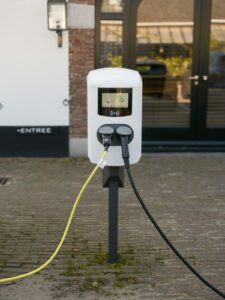
Home / EV Charging News / Government Incentives and Regulations for Electric Vehicles
Tax credits are one of the most popular forms of incentives for EVs. Both federal and state governments offer tax credits for purchasing an EV. These tax credits are applied to the income tax return of the buyer and reduce the amount of taxes owed.
The federal government offers a tax credit of up to $7,500 for the purchase of a new EV. However, this tax credit is limited to the first 200,000 EVs sold by each automaker. Once an automaker reaches this limit, the tax credit begins to phase out. For example, Tesla and General Motors have already reached the 200,000 vehicle limit, and their tax credits have begun to phase out.
In addition to federal tax credits, many states offer their own tax credits for purchasing an EV. These tax credits vary by state, with some offering a percentage of the purchase price as a tax credit, while others offer a flat rate. Some states also offer tax credits for installing home charging stations.
Rebates are another popular form of incentive for EVs. Unlike tax credits, rebates are paid directly to the buyer at the time of purchase.
The federal government offers a rebate of up to $7,500 for the purchase of a new EV. This rebate is similar to the federal tax credit, but it is applied as a point-of-sale rebate instead of being applied to the buyer’s income tax return.
Many states also offer their own rebates for purchasing an EV. These rebates vary by state, with some offering a percentage of the purchase price as a rebate, while others offer a flat rate. Some states also offer rebates for installing home charging stations.
Emissions standards are regulations that govern the amount of pollutants that can be emitted from a vehicle. These standards are put in place to reduce air pollution and improve air quality.
The federal government sets emissions standards for all vehicles sold in the United States. The Environmental Protection Agency (EPA) sets these standards, which are based on the amount of pollutants emitted by a vehicle.
In addition to federal emissions standards, many states have their own emissions standards. These standards are often more strict than federal standards, and they are put in place to improve air quality in the state.
Infrastructure requirements are regulations that govern the necessary infrastructure for EVs to thrive. This includes charging infrastructure and battery recycling infrastructure.
Charging infrastructure is necessary for EVs to be successful. Governments at both the federal and state levels have put in place regulations to ensure that the necessary charging infrastructure is in place. This includes regulations for the installation of public charging stations and the maintenance of existing charging infrastructure. The government may also provide grants and funding to support the installation of charging stations, particularly in areas that may be underserved.
The batteries used in EVs contain valuable materials, and it is important that these materials are recycled when the battery reaches the end of its life. Regulations may be put in place to ensure that automakers are responsible for recycling the batteries used in their EVs. Governments may also provide funding for research into battery recycling technologies and the development of recycling infrastructure.
Government incentives and regulations play a vital role in promoting the adoption of EVs. Tax credits and rebates reduce the cost of purchasing an EV, while emissions standards ensure that EVs are not just shifting the pollution from tailpipes to power plants. Infrastructure requirements ensure that the necessary charging infrastructure is in place, and that battery recycling is conducted responsibly. As EV technology continues to improve and become more widespread, it is likely that the incentives and regulations surrounding EVs will continue to evolve.
The benefits of government incentives and regulations for EVs include reducing greenhouse gas emissions and improving air quality. Additionally, the promotion of EVs can reduce dependence on foreign oil and create new jobs in the clean energy sector. For consumers, the incentives and regulations make EVs more affordable and accessible.
The future of EV incentives and regulations is likely to be shaped by advances in EV technology and the continued efforts to combat climate change. It is possible that tax credits and rebates will be adjusted to reflect the evolving technology and market demand, and that infrastructure requirements will continue to expand to support the growth of EVs. As the world moves towards a cleaner and more sustainable energy future, it is clear that EVs will play a critical role, and government incentives and regulations will continue to be an important driver of this transition.
$2,890.00 Original price was: $2,890.00.$2,790.00Current price is: $2,790.00.
$3,950.00 Original price was: $3,950.00.$3,450.00Current price is: $3,450.00.
$1,650.00 Original price was: $1,650.00.$1,590.00Current price is: $1,590.00.
$2,290.00 Original price was: $2,290.00.$2,150.00Current price is: $2,150.00.
$1,290.00 Original price was: $1,290.00.$799.00Current price is: $799.00.

Your Power Management Partner for Over 25 Years Future Generations Depend on Our Decisions Today ™
2024 © All rights reserved by CyberSwitching